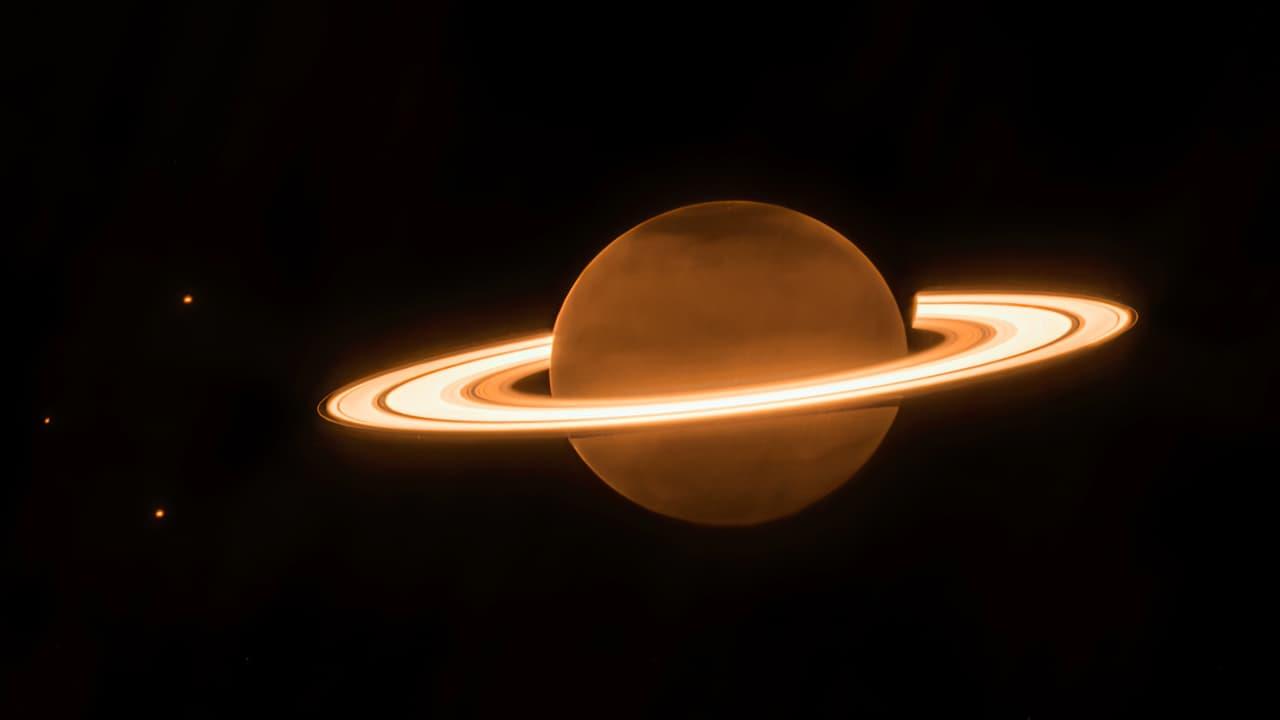
Saturn's Icy Moon Enceladus Might Have The Perfect Conditions To Support Alien Life
Scientists have made a groundbreaking discovery regarding Enceladus, one of Saturn's most enigmatic moons, and one of the most promising locations in our Solar System for the search for extraterrestrial life. A recent study, utilizing data from NASA's Cassini spacecraft, has revealed that Enceladus emits heat from both its north and south poles, not just the south as previously believed. This unexpected finding implies that the moon maintains a consistent internal heat source, potentially allowing its subsurface ocean to remain liquid for an extensive period, a vital condition for life to thrive.
The findings were published in the journal Science Advances, authored by a collaborative team from Oxford University, the Southwest Research Institute, and the Planetary Science Institute in Arizona.
A Hidden Ocean Beneath the Ice
Enceladus may appear as a frozen snowball from the outside, but beneath its thick layer of ice lies a vast, salty ocean. This subsurface body of water is thought to be the primary source of the moon's internal heat and geological activity.
With the presence of liquid water, chemical nutrients, and energy, Enceladus fulfils the essential requirements scientists consider necessary for life. The central question now is whether the moon's internal heating is sustained enough to maintain a warm and liquid ocean over millions or even billions of years.
The warmth is largely attributed to tidal heating. Saturn's strong gravitational pull continuously stretches and compresses Enceladus during its orbit, causing internal friction within its rocky core and generating heat.
If tidal heating were insufficient, the moon's ocean would eventually freeze. Excess heat, however, could lead to an unstable or fractured crust. The fact that Enceladus seems to regulate its heat output indicates it might be just right for supporting life.
Finding Unexpected Warmth at the North Pole
Previously, scientists believed that all of Enceladus's heat originated from its south pole, where dramatic geysers expel plumes of water vapour and ice particles into space.
These plumes were first observed by the Cassini spacecraft in 2005. In contrast, the north pole was thought to be a quiet, frozen region. However, the new study challenges this assumption. By analyzing Cassini's data from two key periods, the long, dark winter of 2005 and the bright summer of 2015, scientists examined how much heat escaped through the surface.
They compared the expected surface temperature based on sunlight alone with the actual temperature measured using Cassini's infrared instruments. The results showed that the north pole was about 7 degrees Kelvin (or roughly 7°C) warmer than anticipated. The only plausible explanation is that heat from the subsurface ocean is leaking upward through the icy crust.
How Much Energy Does Enceladus Produce?
The researchers estimated that the north pole emits approximately 46 milliwatts of heat per square metre, which is roughly two-thirds the amount of heat that typically escapes through Earth's continental crust.
Across the entire moon, this amounts to around 35 gigawatts of power, equivalent to the energy output of 66 million solar panels or 10,000 large wind turbines. When combined with the heat detected at the south pole, Enceladus appears to release a total of about 54 gigawatts of energy.
This figure aligns closely with expectations based on tidal heating from Saturn's gravity, suggesting the moon's internal energy system is in long-term balance. This balance is crucial. It indicates that Enceladus' ocean could remain liquid and stable for an extremely long time.
What Comes Next?
Scientists are now working to determine the age of Enceladus' ocean. If it has existed for billions of years, life would have had ample time to develop. However, if it is relatively young, this window of opportunity may be limited.
The study also provided a clearer understanding of the thickness of the moon's icy shell. By studying how heat escapes, the researchers estimated that the ice at the north pole is about 20 to 23 kilometres thick, and roughly 25 to 28 kilometres thick on average across the moon. These details are essential for planning future space missions, especially if robotic probes or landers are ever sent to explore Enceladus' ocean directly.
A Promising World for Life
Enceladus continues to captivate scientists with its surprising level of activity. Despite its small size, only about 500 kilometres across, it harbours a warm, global ocean beneath its icy surface, a consistent energy source, and a mixture of organic chemicals.
These elements make it one of the most promising locations in our Solar System for the search for life beyond Earth.
Legal Disclaimer:
MENAFN provides the
information “as is” without warranty of any kind. We do not accept
any responsibility or liability for the accuracy, content, images,
videos, licenses, completeness, legality, or reliability of the information
contained in this article. If you have any complaints or copyright
issues related to this article, kindly contact the provider above.

















Comments
No comment